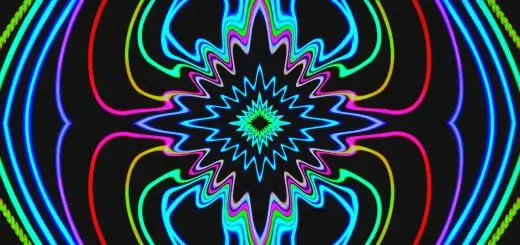Taoist Calligraphy: Expressing the Way

Looking for more amazing products? Check out our online store and explore our collection here! Happy shopping!
Before diving in, please note: This post is for informational purposes only. If you’d like to know more about how we approach topics, feel free to check out our friendly Disclaimer Page.
Hey there, amazing readers! 
We’re committed to delivering quality posts, and your support (even just sticking around despite the ads) means everything to us. So, bear with us, and thanks for helping us keep the good vibes rolling. Now, on to the fun stuff!
TRANSLATE BUTTON AT THE END OF THE ARTICLE
A Quick Overview
Taoist calligraphy is an ancient art form rooted in the principles of Taoism, a philosophical and spiritual tradition originating in China.
This unique style of calligraphy embodies the essence of the Tao, or the Way, through fluid brush strokes and symbolic characters.
Practiced by both monks and scholars, Taoist calligraphy serves as a visual expression of the Taoist philosophy, emphasizing harmony, balance, and simplicity.
In this article, we will explore the history, philosophy, techniques, and symbolism behind Taoist calligraphy, as well as its modern interpretations and continued relevance in today’s world.
Understanding Taoist Calligraphy
Taoist calligraphy is more than just beautiful writing – it is a spiritual practice that seeks to capture the essence of the Tao through the movement of the brush.
By focusing on the flow of energy and the balance of Yin and Yang, Taoist calligraphers aim to create works of art that embody the natural order of the universe.
This art form is not just about creating aesthetically pleasing characters, but about connecting with the energy of the Tao and expressing it through the written word.
Origin and History of Taoist Calligraphy
Taoist calligraphy has its roots in ancient China, where Taoist monks and scholars used brush and ink to transcribe sacred texts and express their understanding of the Tao.
The art form evolved over centuries, influenced by various dynasties and schools of thought.
Taoist calligraphy reached its peak during the Tang and Song dynasties, when renowned calligraphers like Wang Xizhi and Yan Zhenqing created masterpieces that are still revered today.
These early masters set the standard for Taoist calligraphy, inspiring generations of artists to explore the depths of this spiritual practice.
The Philosophy Behind Taoist Calligraphy
At the heart of Taoist calligraphy is the concept of Wu Wei, or effortless action.
Taoist calligraphers seek to embody this principle by allowing the brush to flow freely and spontaneously, without force or intention.
By surrendering to the natural rhythm of the Tao, artists can create works of art that are both harmonious and expressive.
Taoist calligraphy also emphasizes the importance of emptiness and simplicity, allowing the viewer to connect with the essence of the Tao through the spaces between the characters.
Techniques and Tools Used in Taoist Calligraphy
Taoist calligraphy is typically created using a brush, ink, and paper, with the brush being the most important tool.
Calligraphers use a variety of brush strokes, ranging from bold and powerful to delicate and precise, to convey different aspects of the Tao.
The choice of ink and paper also plays a role in the overall aesthetic of the artwork, with traditional materials like rice paper and ink sticks being favored for their quality and texture.
Taoist calligraphy requires patience, skill, and a deep understanding of the Taoist principles in order to create truly meaningful and impactful works of art.
Symbolism in Taoist Calligraphy
The characters and symbols used in Taoist calligraphy are rich in meaning and symbolism, often representing concepts like harmony, balance, and enlightenment.
Each brush stroke carries a specific energy and intention, contributing to the overall message of the artwork.
The way in which the characters are arranged on the page also plays a role in conveying deeper layers of meaning, inviting the viewer to contemplate the mysteries of the Tao.
Through the use of symbolism, Taoist calligraphy transcends mere words and becomes a powerful tool for spiritual reflection and insight.
The Influence of Taoism on Calligraphy
Taoism has had a profound influence on the development of calligraphy in China, shaping the way in which artists approach their craft and express their creativity.
The Taoist emphasis on simplicity, spontaneity, and connection to nature is reflected in the brushwork and composition of Taoist calligraphy.
By embracing the principles of the Tao, calligraphers are able to create works of art that are not only visually stunning but also spiritually profound.
The influence of Taoism on calligraphy can be seen in the works of famous artists throughout history, as well as in the contemporary interpretations of this ancient art form.
Famous Taoist Calligraphers Throughout History
Throughout history, there have been many renowned Taoist calligraphers who have made significant contributions to the art form.
Wang Xizhi, often considered the "Sage of Calligraphy," is known for his mastery of the brush and his expressive style.
Other famous Taoist calligraphers include Yan Zhenqing, Su Shi, and Mi Fu, each of whom brought their own unique perspective to the practice of calligraphy.
These masters have inspired generations of artists and continue to influence the way in which Taoist calligraphy is practiced and appreciated today.
Modern Interpretations of Taoist Calligraphy
In the modern era, Taoist calligraphy continues to thrive as artists explore new ways to express the essence of the Tao through their work.
Contemporary calligraphers often blend traditional techniques with innovative approaches, incorporating new materials and styles to create fresh and engaging artworks.
Some artists combine Taoist calligraphy with other art forms, such as painting or sculpture, to push the boundaries of the traditional practice and reach new audiences.
Despite the challenges of the modern world, Taoist calligraphy remains a vibrant and evolving art form that continues to inspire and captivate audiences around the globe.
Taoist Calligraphy as a Form of Meditation
For many practitioners, Taoist calligraphy is not just a visual art form but a form of meditation and spiritual practice.
By immersing themselves in the process of creating calligraphy, artists can quiet the mind, focus their energy, and connect with the essence of the Tao.
The rhythmic motion of the brush, the flow of ink on paper, and the deliberate placement of characters all contribute to a state of mindfulness and presence.
Through the practice of Taoist calligraphy, artists can cultivate a sense of inner peace, clarity, and harmony, aligning themselves with the Way of the Tao.
Practicing Taoist Calligraphy Today
While Taoist calligraphy has ancient roots, it remains a relevant and accessible art form for practitioners of all backgrounds.
Many calligraphy schools and workshops offer classes in Taoist calligraphy, providing students with the opportunity to learn the techniques and philosophy behind this unique art form.
In addition to formal instruction, aspiring calligraphers can also practice on their own, using online resources and instructional books to deepen their understanding of Taoist calligraphy.
By immersing themselves in the practice of calligraphy, artists can experience the transformative power of the Tao and express their own unique insights through the written word.
Appreciating the Beauty of Taoist Calligraphy
One of the most captivating aspects of Taoist calligraphy is its sheer beauty and elegance.
The fluid brush strokes, graceful curves, and dynamic compositions of Taoist calligraphy create a sense of movement and vitality that is both captivating and inspiring.
Each artwork is a unique expression of the artist’s inner world, reflecting their emotions, thoughts, and spiritual insights.
By appreciating the beauty of Taoist calligraphy, viewers can connect with the universal principles of the Tao and gain a deeper understanding of themselves and the world around them.
The Continuing Legacy of Taoist Calligraphy
As we look to the future, the legacy of Taoist calligraphy continues to inspire and influence artists around the world.
By preserving the ancient traditions and principles of Taoist calligraphy, practitioners can ensure that this unique art form remains a vital and relevant expression of the Tao for generations to come.
Through exhibitions, workshops, and educational programs, artists can share their passion for Taoist calligraphy with a global audience, fostering a greater appreciation for the beauty and wisdom of this ancient art form.
The continuing legacy of Taoist calligraphy serves as a reminder of the enduring power of the Tao and its ability to inspire creativity, contemplation, and connection in our lives.
Conclusion
Taoist calligraphy is more than just a form of writing – it is a spiritual practice, a meditation, and a visual expression of the Way of the Tao.
By understanding the history, philosophy, techniques, and symbolism behind Taoist calligraphy, we can gain a deeper appreciation for this ancient art form and its enduring legacy.
Whether practiced by monks in a temple or artists in a studio, Taoist calligraphy continues to inspire and captivate audiences with its beauty, elegance, and profound insights into the nature of the universe.
Through the practice of Taoist calligraphy, we can connect with the essence of the Tao and find harmony, balance, and peace in our own lives.

The Enlightenment Journey is a remarkable collection of writings authored by a distinguished group of experts in the fields of spirituality, new age, and esoteric knowledge.
This anthology features a diverse assembly of well-experienced authors who bring their profound insights and credible perspectives to the forefront.
Each contributor possesses a wealth of knowledge and wisdom, making them authorities in their respective domains.
Together, they offer readers a transformative journey into the realms of spiritual growth, self-discovery, and esoteric enlightenment.
The Enlightenment Journey is a testament to the collective expertise of these luminaries, providing readers with a rich tapestry of ideas and information to illuminate their spiritual path.
Our Diverse Expertise
While our primary focus is on spirituality and esotericism, we are equally passionate about exploring a wide range of other topics and niches 

To ensure we provide the most accurate and valuable insights, we collaborate with trusted experts in their respective domains 
Our blog originally focused on spirituality and metaphysics, but we’ve since expanded to cover a wide range of niches. Don’t worry—we continue to publish a lot of articles on spirituality! Frequently visit our blog to explore our diverse content and stay tuned for more insightful reads.
Hey there, amazing reader! 
Check out our store here and take a peek at some of our featured products below! Thanks for being awesome!










